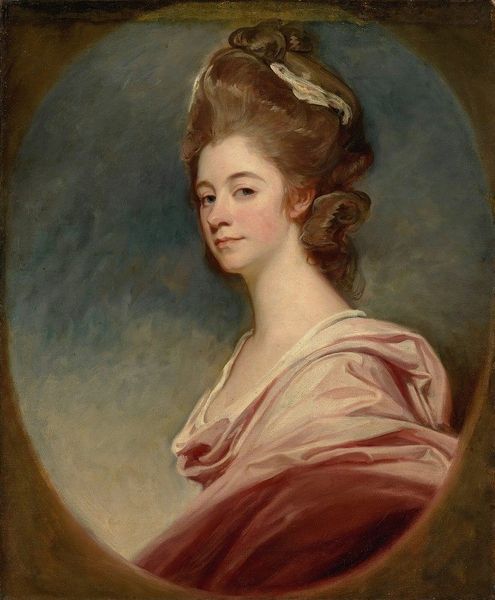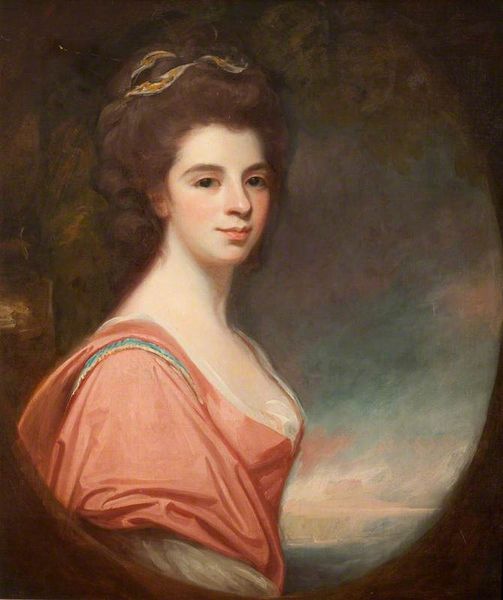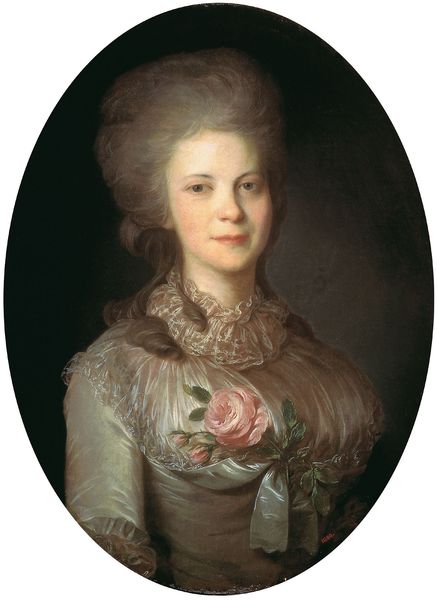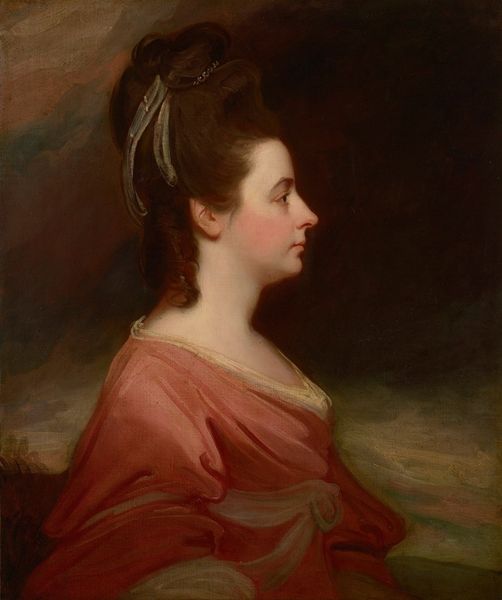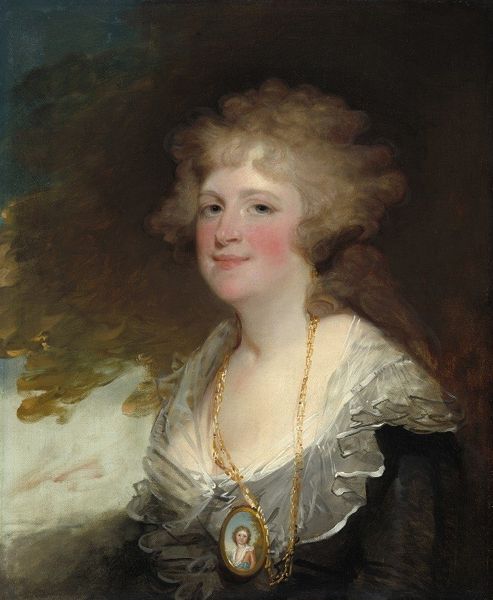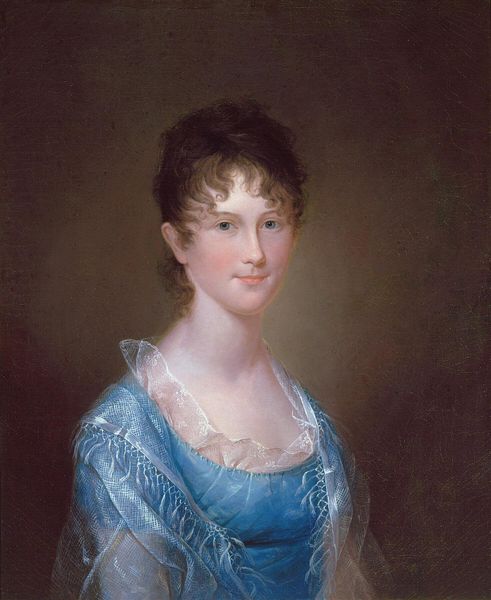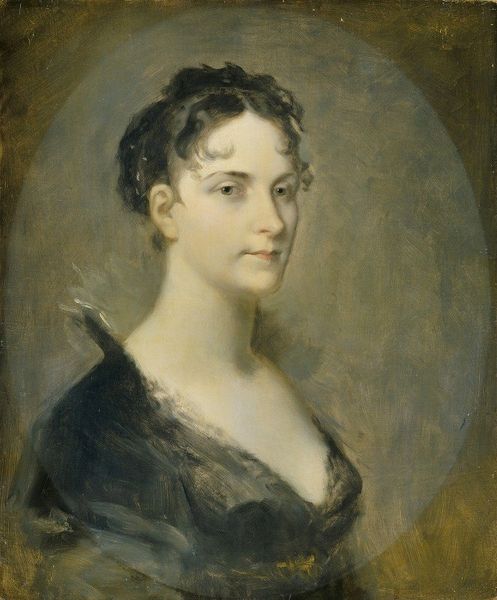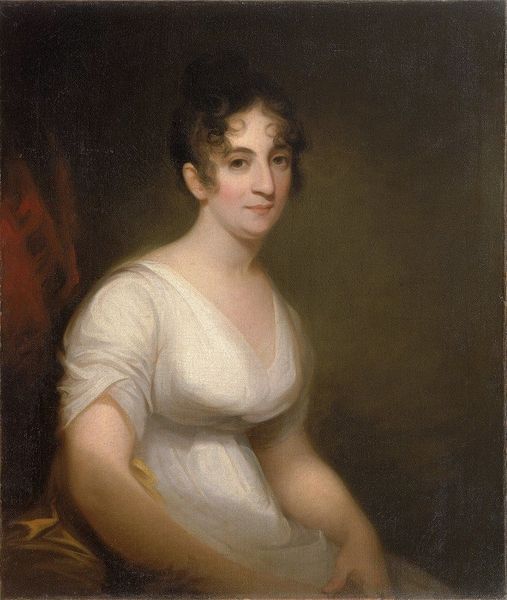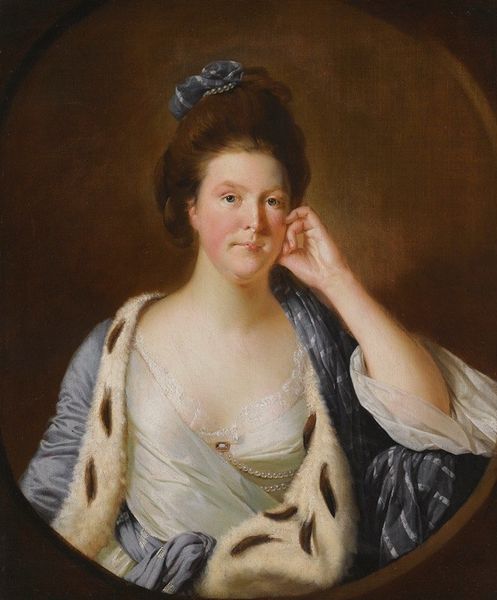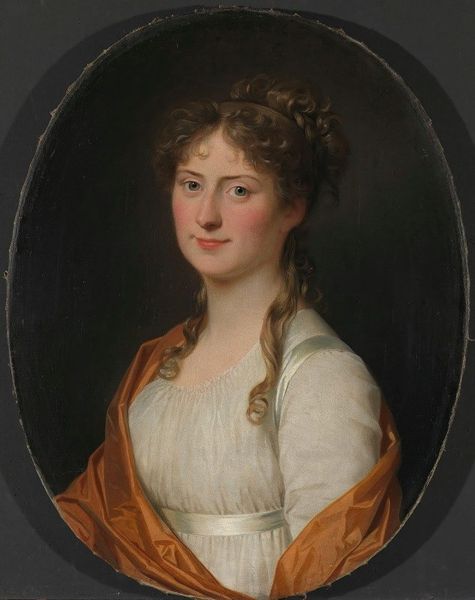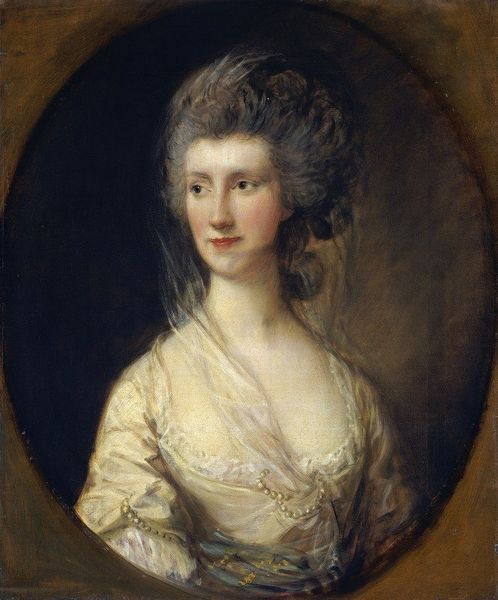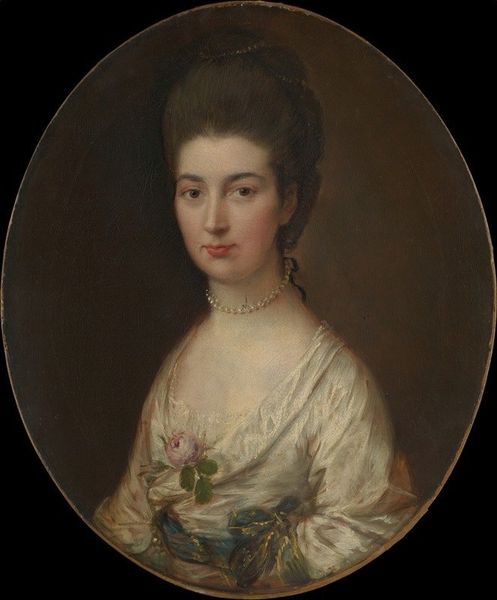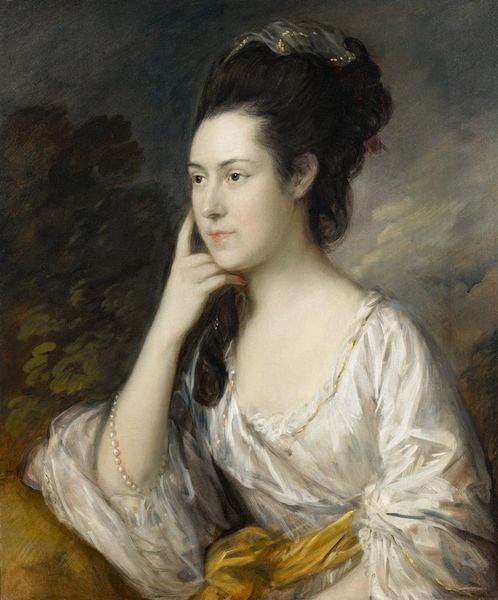
painting, oil-paint
#
portrait
#
figurative
#
painting
#
oil-paint
#
intimism
#
rococo
Copyright: Public Domain: Artvee
Curator: Here we have "Portrait of a Woman, traditionally identified as Lady Hervey", painted around 1770 by Angelica Kauffmann. It's an oil on canvas, capturing the sitter in an oval frame, a popular convention for portraits during the Rococo period. Editor: There's something so serene about her expression, almost an air of detached amusement. And the way Kauffmann captures the light, especially on the fabric of her turban – it’s luminous. But is that orientalist garb? Curator: Precisely. It's important to view this image within its historical context. The "exotic" was very fashionable in European society at the time. Portraits like these reflected an engagement with global trade, and often signaled wealth and worldliness, or supposed "open-mindedness" in the sitter. Editor: A worldliness usually gleaned through colonial trade and imperial ventures, yes? And the orientalising turban acts as a costume that could suggest certain assumed qualities such as openness to cultural hybridity, though often superficial in reality. It also allows the portrait to exist slightly outside the confines of a formal portrait—more intimate. Curator: Exactly, this portrait represents an exercise in identity construction and a performance of social standing. It's worth remembering how powerfully class dictated self-representation. What appear to be 'intimate' details— the lacy blouse or casual turban, for instance—were in fact extremely codified, designed to communicate particular values to a certain viewership. Editor: But Kauffmann was also an outsider herself in a way, wasn't she? One of only two women who founded the Royal Academy. It’s interesting that as a woman, she would also partake in portraying the female gaze in this constructed, costumed manner. Curator: Indeed, that complex tension is part of what makes Kauffmann such a fascinating figure to study! As an accomplished woman painter, Kauffmann enjoyed enormous success, but she also lived within limitations of her era. Through studying the layers and contexts in the piece, this portrait opens questions about identity and cultural exchange in the eighteenth century. Editor: Yes. This portrait becomes more than just a depiction of a noble woman; it invites consideration about the gazes and forces at play in representing a specific construction of "femininity" and otherness in art. It serves as a great springboard to examining portraiture in the 18th century and the construction of social status. Curator: A fine encapsulation of how art opens dialogue around historical issues in many different perspectives, I think.
Comments
No comments
Be the first to comment and join the conversation on the ultimate creative platform.
